Last Updated on March 15, 2024 by teamobn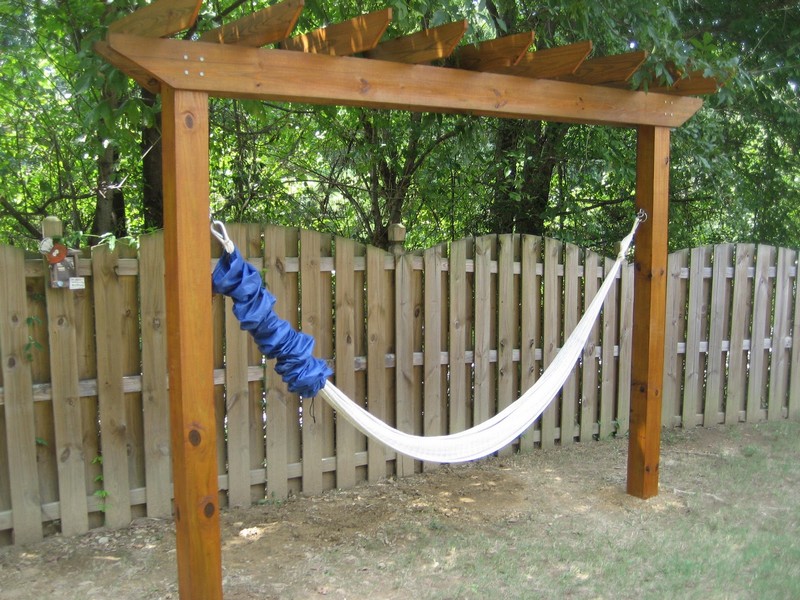
Hammocks aren’t just for relaxing family holidays – although they are excellent for that. They can also improve your mental and physical health, helping you become a calmer, well-rested person.
A study by the University of Geneva in Switzerland found that swaying gently in a hammock can often cure insomnia.
The gentle swing of a hammock helps the brain reach deeper levels of sleep, ensuring that you get the fullest benefits of an afternoon nap.
If you love the idea of relaxing in a hammock in your yard but don’t have any trees, this DIY outdoor furniture project is the solution.
It’s also a great addition to your outdoor space, looking beautiful with its pergola roof!
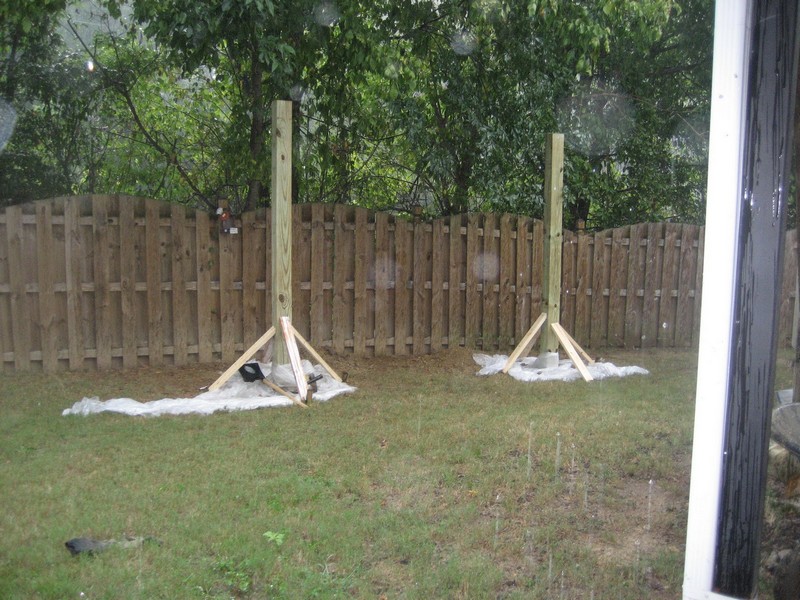
What are the materials needed to create a DIY hammock stand?
This DIY project requires a strong and secure build, but it’s definitely one that can be completed by everyone! It’s simple and, with all the right tools, is easy too.
No need to wait forever for trees to grow in your yard! All you need are big cedar posts, and you’ll be able to enjoy siestas outdoors in no time. 🙂
You’ll be needing the following materials to make a DIY hammock stand.
Materials:
- 6×6 Cedar Posts
- 2×4 Cedar Lumber
- Concrete Mix
- Semi-transparent Cedar Nautraltone Wood Stain
- Bolts and Screws
- Galvanized L-Brackets
Tools:
- Miter Saw
- Table Saw
- Drill
- Shovel
- Trowel
- Carpenter’s Level
- Paintbrush
Click on any image to start the lightbox display. Use your Esc key to close the lightbox. You can also view the images as a slideshow if you prefer 😎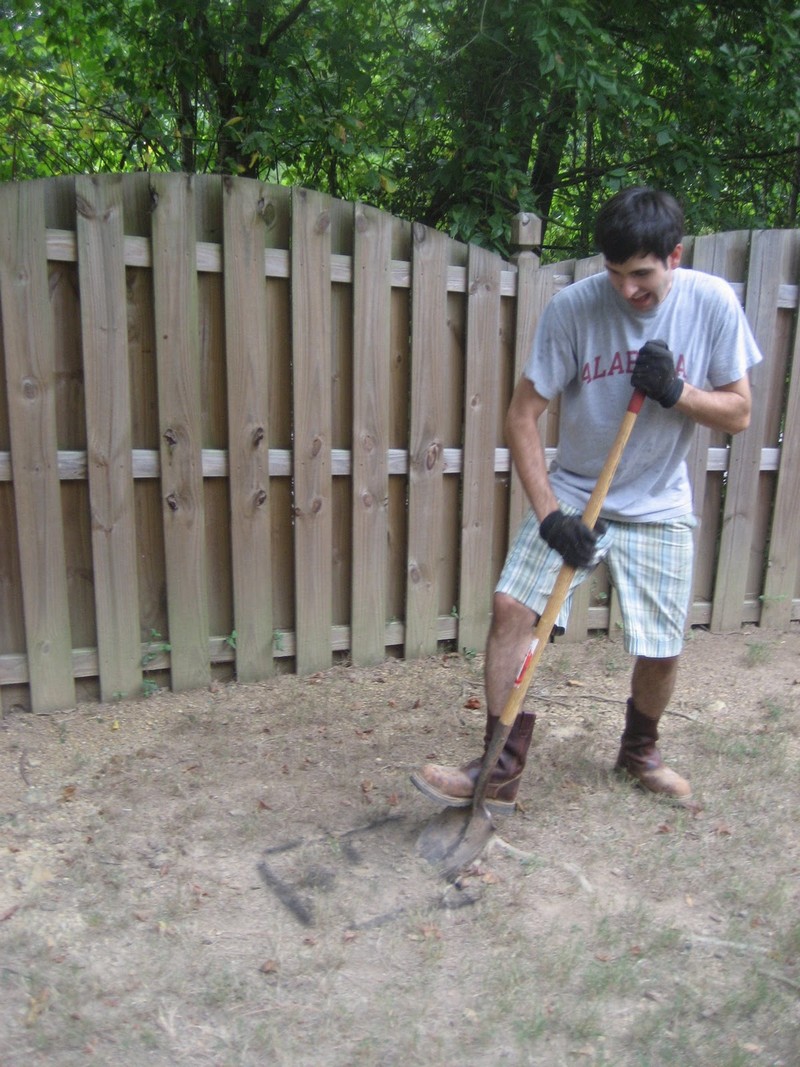
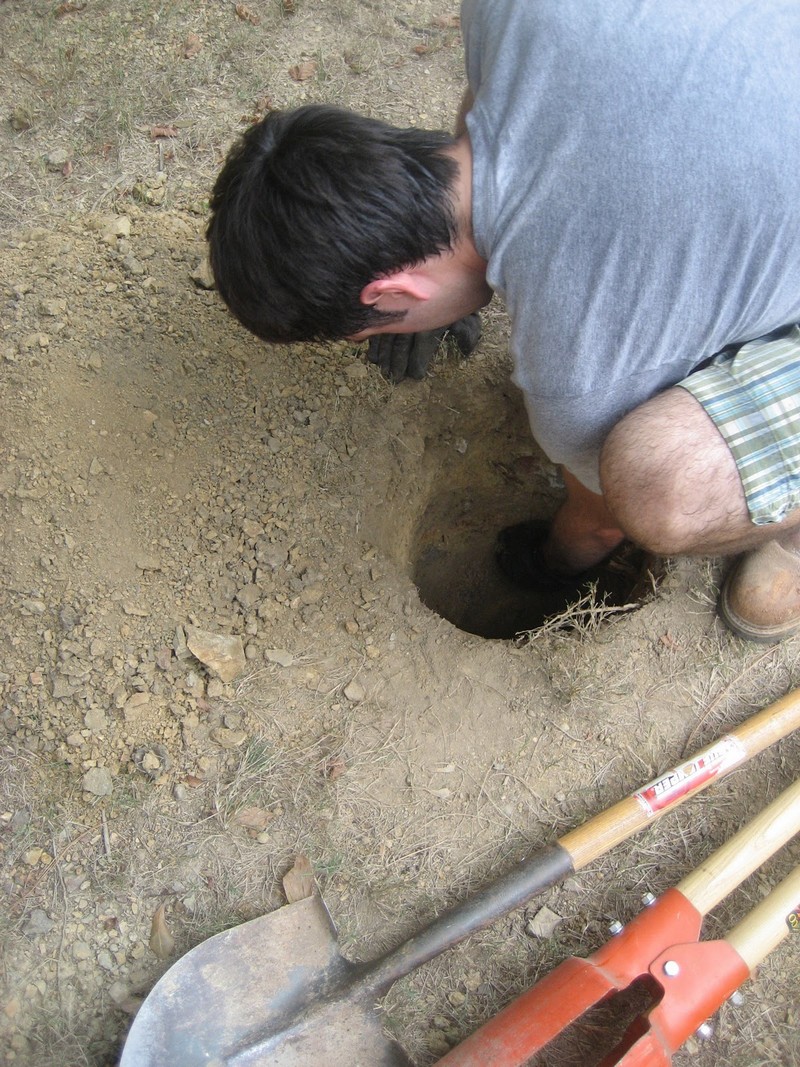
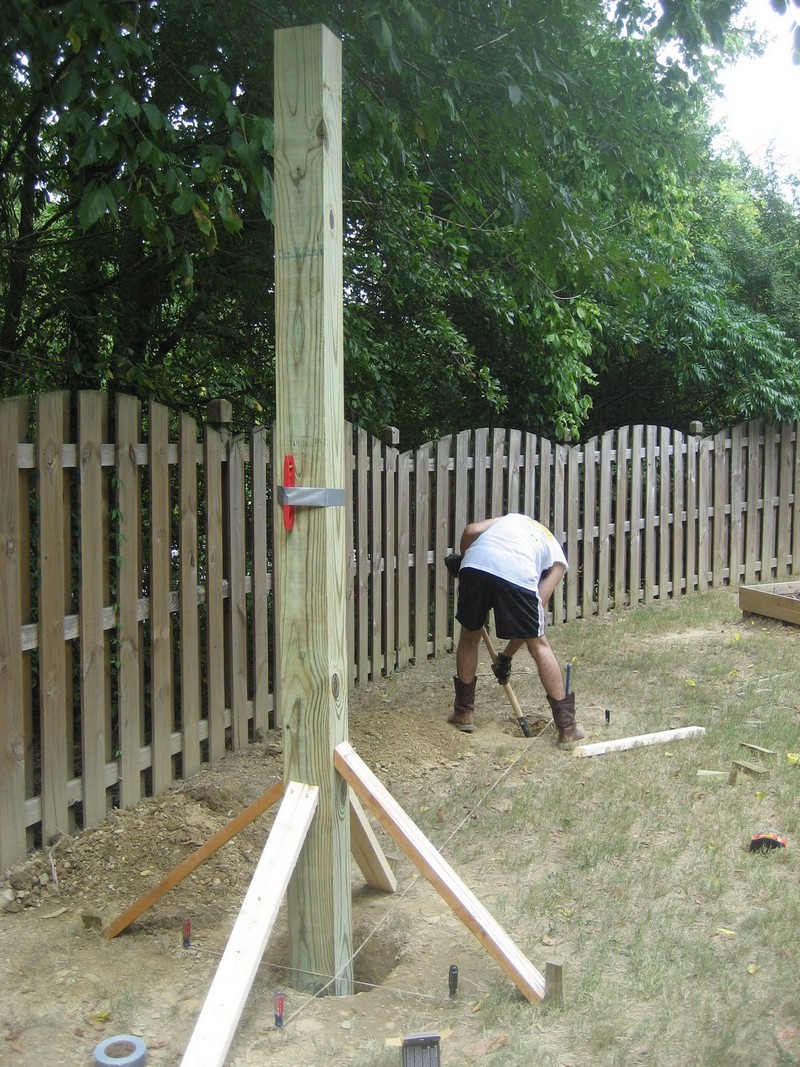
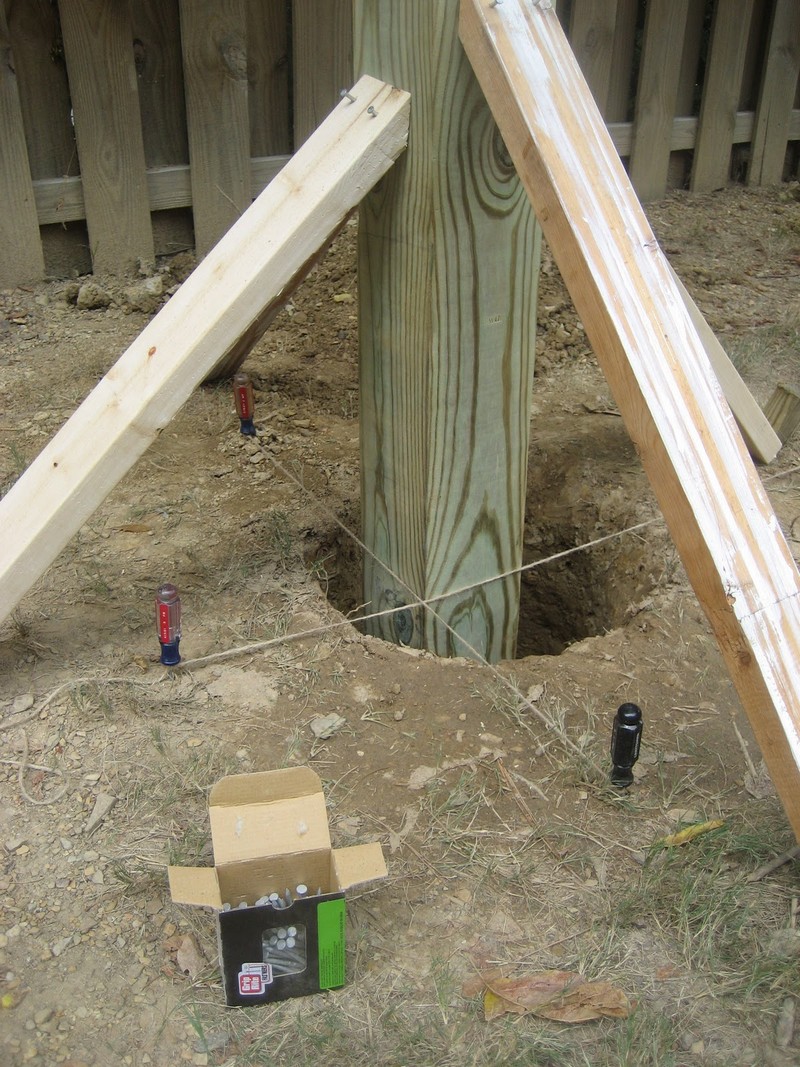

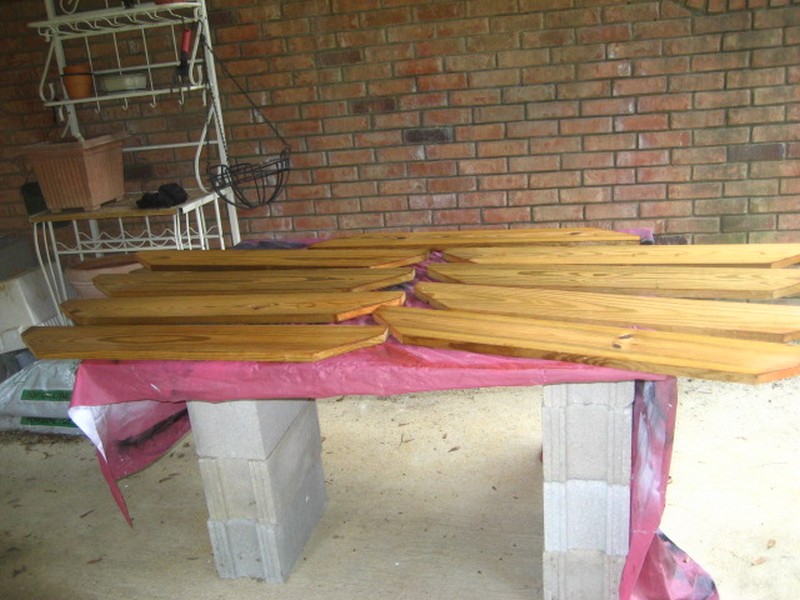
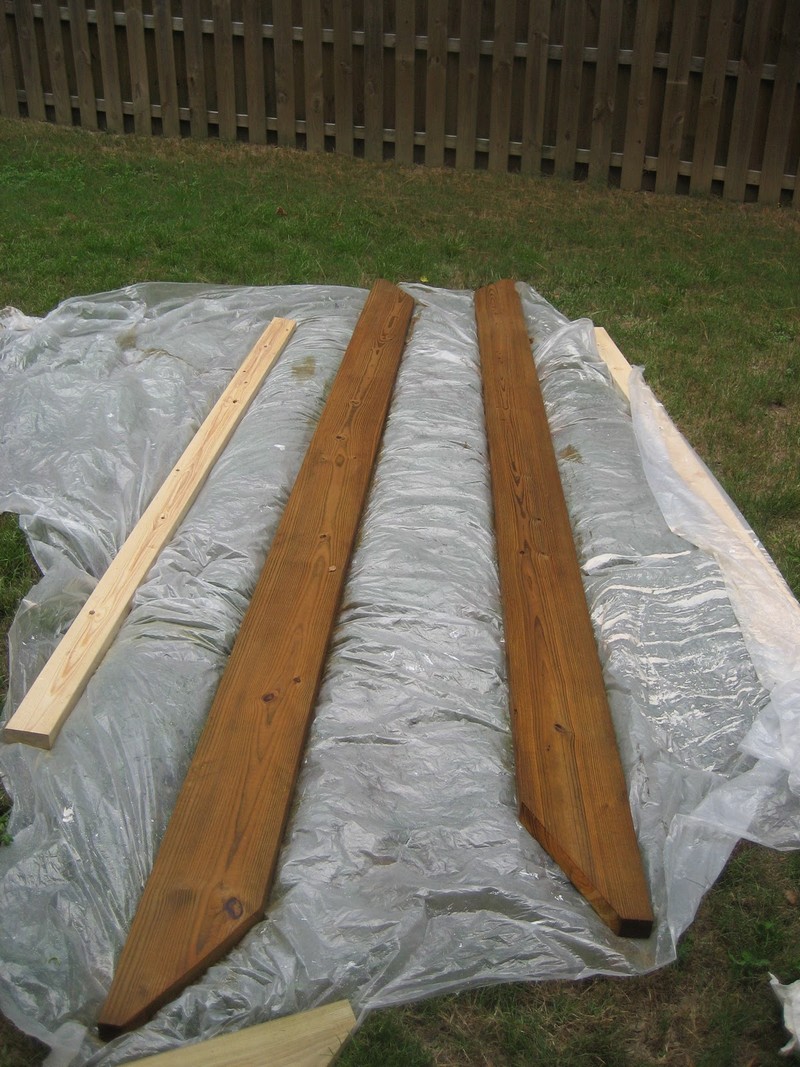
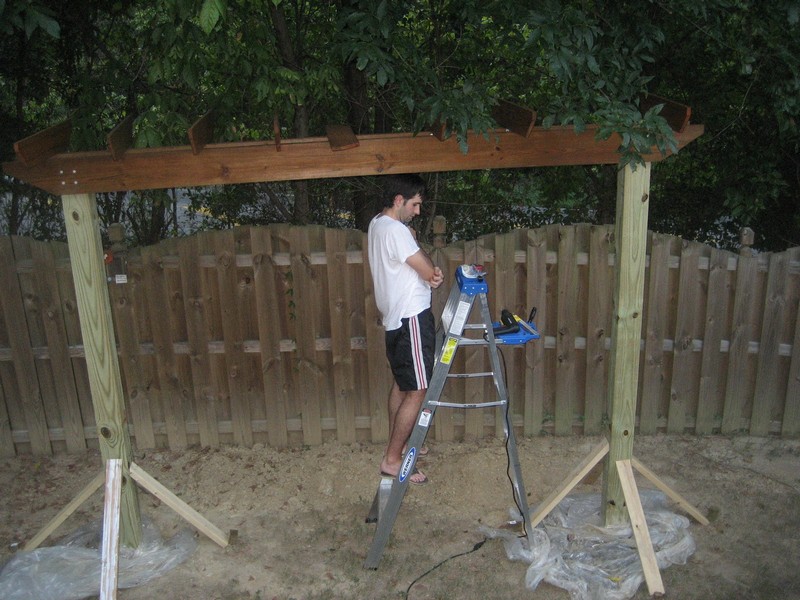
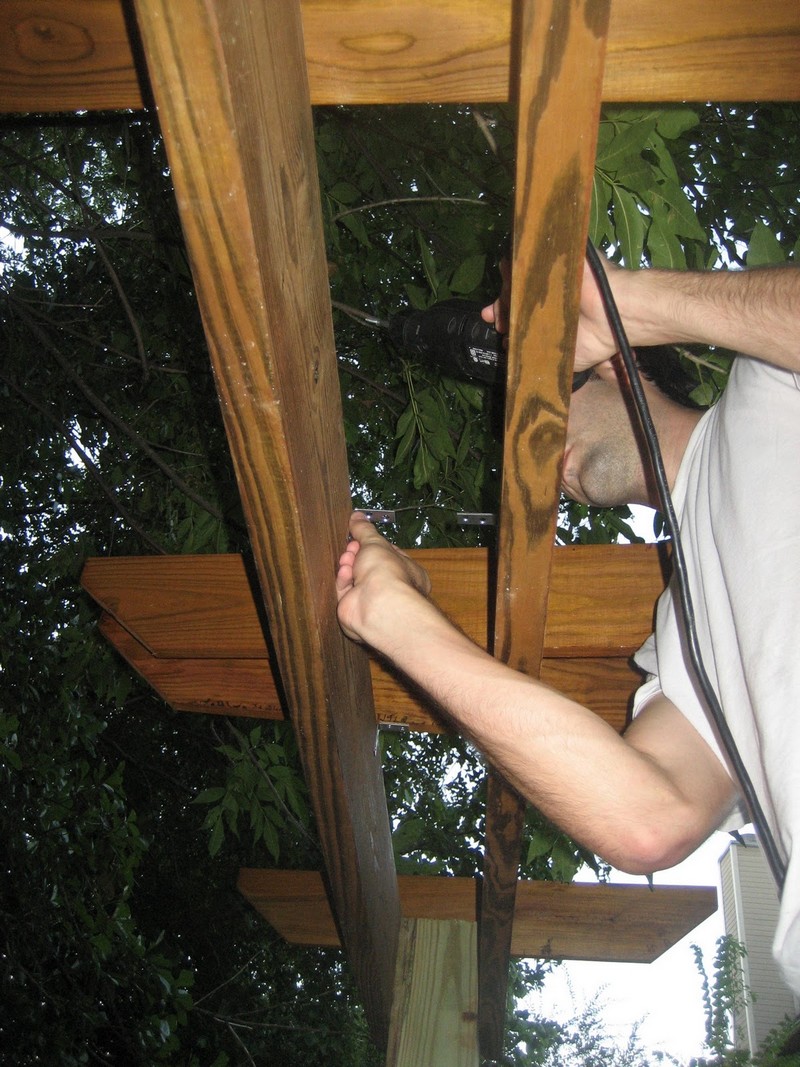
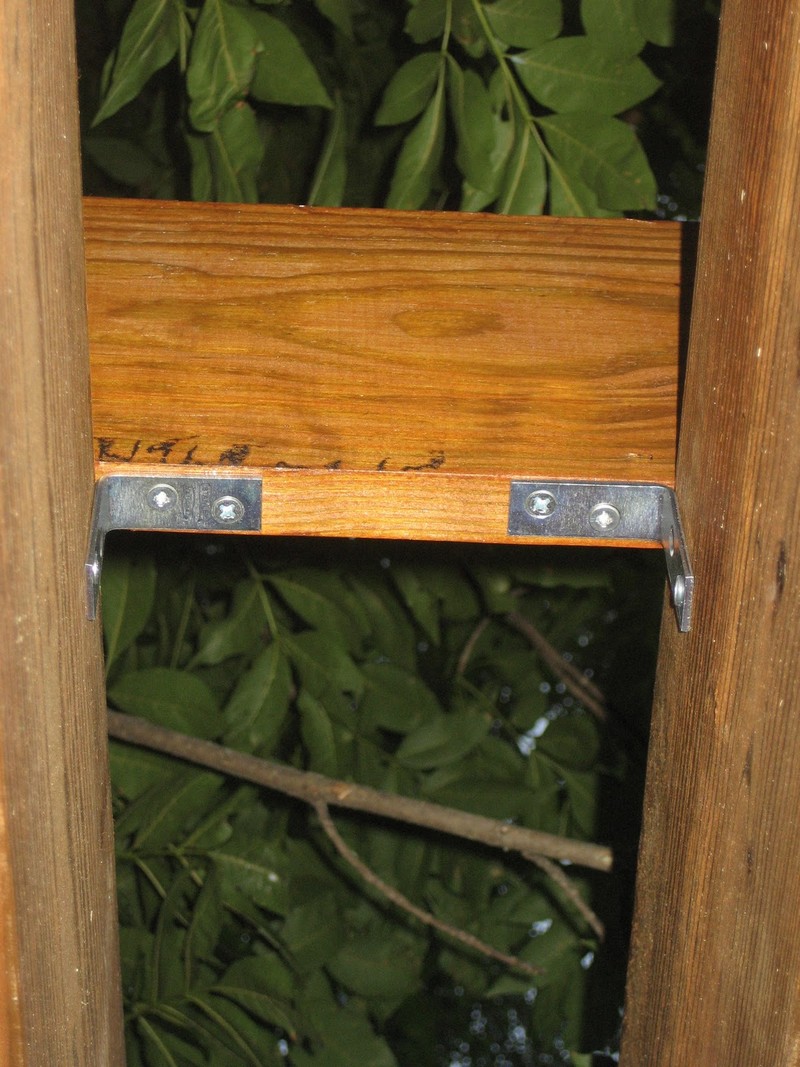


Steps:
Step 1: Gather Materials and Tools
Before diving into the construction process, gather all the necessary materials and tools. You’ll need 6×6 cedar posts for the main support beams, 2×4 cedar lumber for cross supports, concrete mix for stability, semi-transparent cedar natural tone wood stain for protection and aesthetics, bolts and screws for assembly, and galvanized L-brackets for additional reinforcement. Additionally, gather tools such as a saw, drill, level, measuring tape, shovel, and mixing container for the concrete.
Step 2: Measure and Cut Cedar Posts and Lumber
Using a measuring tape and pencil, mark the desired height and dimensions for your hammock stand on the 6×6 cedar posts and 2×4 cedar lumber. Use a saw to carefully cut the posts and lumber to the appropriate lengths, ensuring accuracy and precision in your measurements.
Step 3: Dig Holes for Support Posts
Using a shovel, dig four holes in the ground, spaced evenly apart according to the dimensions of your hammock stand. The holes should be deep enough to accommodate one-third of the length of the cedar posts, ensuring stability and support for the structure.
Step 4: Set Cedar Posts in Concrete
Place the cedar posts into the holes, ensuring they are level and plumb. Mix the concrete according to the manufacturer’s instructions and pour it into the holes, surrounding the cedar posts. Use a level to ensure the posts are perfectly upright and adjust as necessary. Allow the concrete to cure and set completely before proceeding to the next step.
Step 5: Attach Cross Supports
Once the concrete has set, it’s time to attach the cross supports to the cedar posts. Use bolts and screws to secure the 2×4 cedar lumber horizontally between the posts, creating a sturdy frame for the hammock to hang from. Ensure the cross supports are spaced evenly and securely fastened to the posts for added stability.
Step 6: Stain Cedar Wood
Before assembling the hammock stand, apply a coat of semi-transparent cedar natural tone wood stain to the cedar posts and lumber. This will not only enhance the aesthetic appeal of the stand but also provide protection against the elements, prolonging its lifespan and durability.
Step 7: Assemble Hammock Stand
With the stained cedar wood dry, it’s time to assemble the hammock stand. Use bolts and screws to attach any additional cross supports or braces, ensuring the structure is strong and secure. Double-check all connections and tighten them as needed to prevent any wobbling or instability.
Step 8: Test and Enjoy
Once the hammock stand is fully assembled, it’s time to test it out! Hang your hammock from the cross supports, ensuring it is securely attached and balanced. Give it a gentle sway to ensure stability, and then climb in, relax, and enjoy the fruits of your labour. Whether you’re lounging in the backyard or camping in the great outdoors, your DIY hammock stand will provide the perfect sanctuary for rest.
Crafting your sturdy hammock stand is a rewarding DIY project that requires just a few materials, some basic tools, and a little bit of time and effort. By following these eight simple steps and using quality cedar wood and construction materials, you can create a durable and beautiful hammock stand that will provide years of enjoyment and relaxation.
Thanks to My Indecisive Life for sharing tips on how to make a DIY hammock stand.
Wrapping It Up
Crafting your sturdy hammock stand is a fulfilling endeavour that not only provides a practical solution for enjoying leisure time but also allows for creative expression and customization. Through the eight simple steps outlined in this guide, you’ve learned how to transform basic materials such as 6×6 cedar posts, 2×4 cedar lumber, concrete mix, wood stain, bolts, screws, and galvanized L-brackets into a durable and aesthetically pleasing structure.
By following these steps and exercising care and precision in the construction process, you’ve created a hammock stand that not only provides a stable base for relaxation but also enhances the visual appeal of your outdoor space. The incorporation of sturdy materials, proper measurements, and thoughtful design ensures that your hammock stand is both functional and long-lasting.
As you relax in your hammock, swaying gently in the breeze, you can take pride in the craftsmanship and effort that went into creating your outdoor sanctuary. Whether you’re lounging in the backyard, camping in the wilderness, or enjoying a sunny day at the beach, your DIY hammock stand offers a haven of tranquility where you can unwind and rejuvenate.
This project serves as a testament to your ingenuity and resourcefulness, demonstrating that with a bit of creativity and determination, you can bring your ideas to life and build practical solutions for your everyday needs. Whether you’re a seasoned DIY enthusiast or a novice craftsman, this guide provides a straightforward and accessible pathway to constructing your own hammock stand.
In addition to the satisfaction of completing a DIY project, crafting your own hammock stand offers numerous benefits, including cost savings, customization options, and the opportunity to hone your woodworking skills. By taking the time to build something with your own two hands, you’ve not only created a functional piece of furniture but also fostered a sense of accomplishment and self-reliance.
So, as you relax in your hammock and soak in the serenity of your outdoor oasis, take a moment to appreciate the journey that brought you here. Your DIY hammock stand is more than just a piece of furniture—it’s a reflection of your creativity, resourcefulness, and passion for craftsmanship. And as you continue to embark on future DIY projects, may you find joy and fulfillment in the process of bringing your ideas to life.
Frequently Asked Questions
1. How much weight can the DIY hammock stand support?
The weight capacity of the hammock stand will depend on several factors, including the materials used, the design of the stand, and the quality of construction. Generally, a well-built hammock stand should be able to support the weight of an average adult or two, but it’s essential to follow the instructions carefully and ensure proper reinforcement for added stability.
2. Can you customize the size of the hammock stand to fit your space?
Yes, you can customize the dimensions of the hammock stand to suit your specific needs and space constraints. Adjusting the length, width, or height of the stand can help accommodate different sizes of hammocks and fit into smaller or larger areas. Just be sure to maintain proper proportions and structural integrity when making modifications.
3. Do you need any special tools or skills to build the hammock stand?
While some basic woodworking skills are helpful, you don’t necessarily need advanced expertise to construct the hammock stand. Basic tools such as a saw, drill, level, measuring tape, and screwdriver are typically sufficient for the project. However, if you’re unfamiliar with using power tools or woodworking techniques, it may be helpful to enlist the assistance of a more experienced DIYer or consult online tutorials for guidance.
4. How long does it take to build the hammock stand?
The time required to build the hammock stand will depend on your skill level, the complexity of the design, and the availability of materials and tools. In general, constructing the hammock stand can be completed over the course of a day or weekend, with each step taking approximately 1-2 hours to complete. However, it’s essential to allow additional time for tasks such as curing concrete or applying wood stain, which may require overnight drying periods.
5. Can you use different types of wood or materials for the hammock stand?
Yes, you can use different types of wood or materials for the hammock stand, depending on your preferences and availability. Cedar is a popular choice due to its natural resistance to rot and insects, but other hardwoods such as oak or teak can also be suitable options. Additionally, metal or PVC pipe can be used for a more modern or industrial look. Just be sure to choose materials that are durable, weather-resistant, and able to support the weight of the hammock and its occupants.








